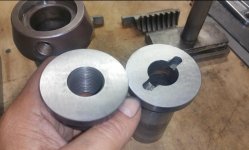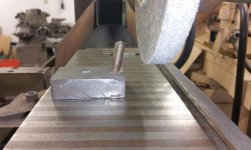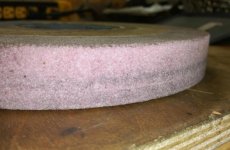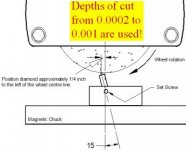texasgeartrain
Titanium
- Joined
- Feb 23, 2016
- Location
- Houston, TX
I have an old B & S #5 surface grinder. The wheel ID is 3", and can accommodate I believe up to a 1" wide wheel. And wheel OD can be up to 10".
I'm not using coolant right now.
I want to run a few thousandths off a hardened Aloris tool holder. I don't know which steel they use. I'd like a finer finish.
What wheel type and grit would you guys recommend ?
A pic of the holder type I want to run. I will be running the two sides adjacent to dovetail, you can see wear dis-colorization there in pic, I need to take those two surfaces down a bit to help dovetail fit.
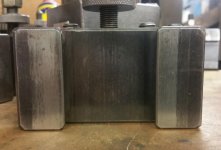
I'm not using coolant right now.
I want to run a few thousandths off a hardened Aloris tool holder. I don't know which steel they use. I'd like a finer finish.
What wheel type and grit would you guys recommend ?
A pic of the holder type I want to run. I will be running the two sides adjacent to dovetail, you can see wear dis-colorization there in pic, I need to take those two surfaces down a bit to help dovetail fit.




